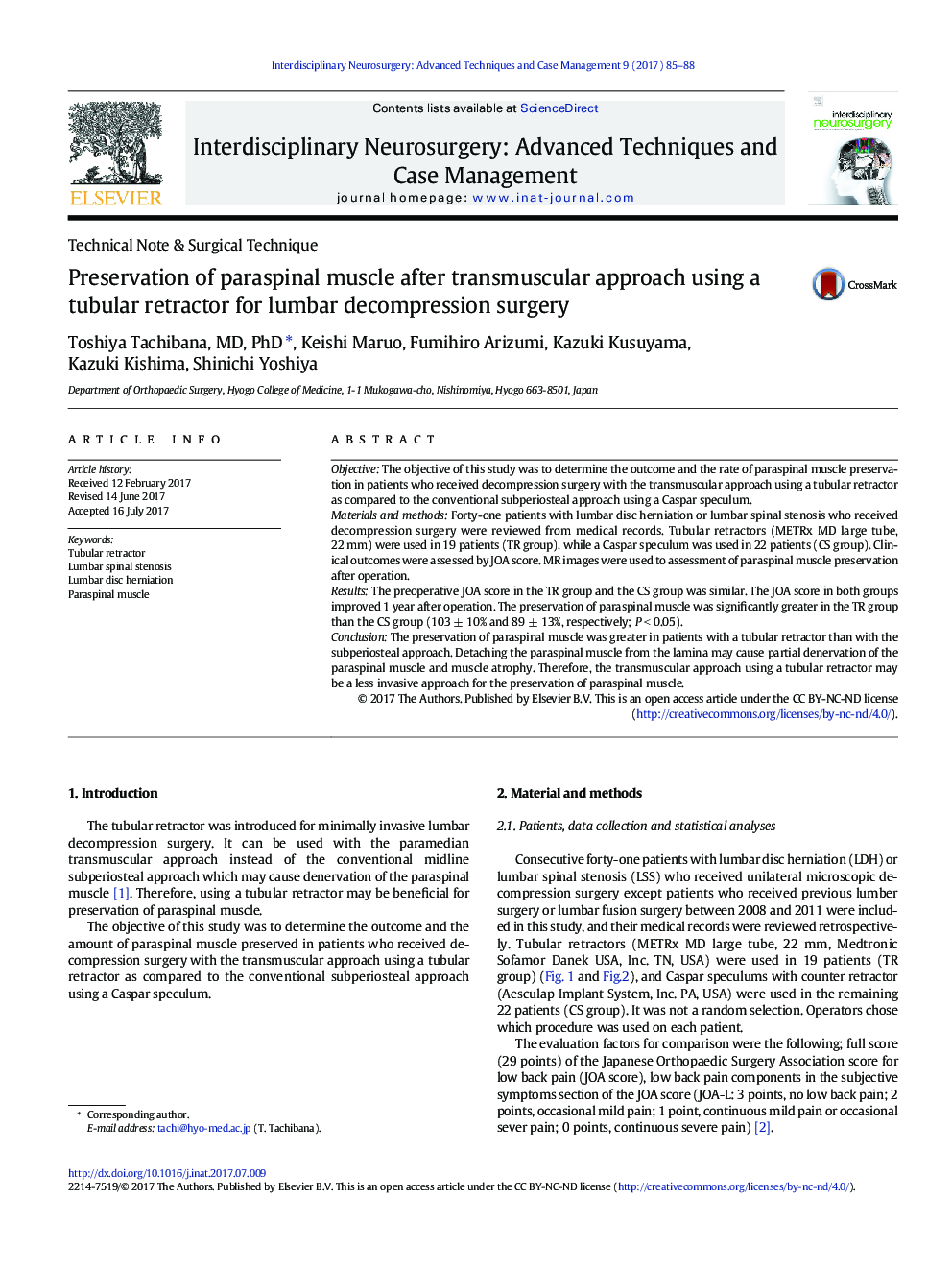| Article ID | Journal | Published Year | Pages | File Type |
|---|---|---|---|---|
| 5629447 | Interdisciplinary Neurosurgery | 2017 | 4 Pages |
ObjectiveThe objective of this study was to determine the outcome and the rate of paraspinal muscle preservation in patients who received decompression surgery with the transmuscular approach using a tubular retractor as compared to the conventional subperiosteal approach using a Caspar speculum.Materials and methodsForty-one patients with lumbar disc herniation or lumbar spinal stenosis who received decompression surgery were reviewed from medical records. Tubular retractors (METRx MD large tube, 22 mm) were used in 19 patients (TR group), while a Caspar speculum was used in 22 patients (CS group). Clinical outcomes were assessed by JOA score. MR images were used to assessment of paraspinal muscle preservation after operation.ResultsThe preoperative JOA score in the TR group and the CS group was similar. The JOA score in both groups improved 1 year after operation. The preservation of paraspinal muscle was significantly greater in the TR group than the CS group (103 ± 10% and 89 ± 13%, respectively; P < 0.05).ConclusionThe preservation of paraspinal muscle was greater in patients with a tubular retractor than with the subperiosteal approach. Detaching the paraspinal muscle from the lamina may cause partial denervation of the paraspinal muscle and muscle atrophy. Therefore, the transmuscular approach using a tubular retractor may be a less invasive approach for the preservation of paraspinal muscle.
